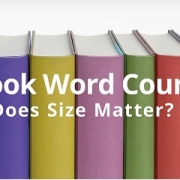What is the best length for a novel?
It’s a question to bedevil most first-time authors. When I put together my first novel I kept wondering if I was going too far or not far enough. At 60,000 words I knew there was still much I needed to write to round out the various plotlines – but would I end up with a long-winded saga or was it heading for a ‘normal’ length book?
I did the only thing any self-respecting researcher would do – I Googled for as much information as I could find. What I discovered was that there are too many different answers, although I found some great advice that urged authors to let the story run its own course.
In other words, tell it the way you want to tell it and when you’ve finished telling it, the book is completed. With certain provisos it’s not a bad philosophy.
Let’s find some context in which to place this debate. Writers of fiction have basically three available options. My oft-quoted friends at Wikipedia believe a short story should be less than 7,500 words; a novella should be between 17,500 and 40,000 words; and a novel is anything over 40,000 words. I’m sorry Wikipedia but I just don’t buy it! In my humble opinion the bands are much too narrow to be commercially viable. Here’s my own (very personal) take on what length each should be:
Short story – usually ranging from 3,000 words to 10,000 words.
Novella – usually not less than 15,000 and ranging up to 35,000 words.
Full-length – usually not less than 35,000 words and ranging up to 110,000 words.
Okay, I know this is very broad and you’ll find plenty of examples well outside these ranges. The intention is to guide rather than prescribe.
Consider this – the average paperback page has 300 words and the average Kindle page has 240 words. If you write a full-length paperback of 90,000 words you’ll fill 300 pages (the same number of pages in a Kindle will amount to 72,000 words). My own opinion is that anything in paperback dipping much below 260 pages (78,000 words) is in danger of moving from full-length to novella-length. I’m sure many will disagree but as a yardstick it’s not an outrageous guide.
So, what are the differences?
Many authors have a list of potential stories constantly whirring and clicking around their brains. In many cases these are stories best dealt with in a short-story format, usually something away from the normal output of the author, and usually featuring a different set of characters, or even an entirely different genre, than he or she is used to. It gives them the chance to get the story out there and with less effort (in terms of time, not quality!) than they would usually expend. The market for short stories is growing exponentially, with more and more readers enjoying smaller bites, particularly from their favourite authors.
Novellas could be described as falling between two stools – they are way beyond short stories but would breach trade descriptions if they masqueraded as full-length.
I recently read an action story on Kindle and was surprised to see the percentage bar announcing 55% completed, despite my built-in radar telling me I could only be about a third of the way through. I had failed to notice that what I had downloaded was a novella (my own fault – it was properly described, I just missed it) and to my surprise I really enjoyed the format. I think these too will become more and more popular.
What I learned from reading my first novella (yes, I’ve lived a sheltered, full-length reading life until now) was that it hit a lot of marks for an enjoyable 1- to 2-night read which allowed me to move on to my next book.
eBook publishing has shifted the goalposts considerably. It’s easier to imagine downloading and reading a good short story than it is to encounter its slim counterpart on bookshelves. The costs of production of the printed version would still have to be passed into the reader but an eBook variation can be offered for as little as 99 cents, or less.
The very nature of short-story construction is easy to grasp, but it usually takes the experience of having at least one novel under your belt before you’re able to determine at the outset whether the book you’re about to embark upon will flesh out to be a novella or full-length. I would suggest that if you are a fair way into your project to write a full-length novel and find the story is wrapping itself up sooner (in terms of the number of words/pages) than you anticipated, then you should change your goal to a novella. The worst thing you can do is start rewriting and adding unnecessary bits just to watch the word count grow in the bottom left corner of your Microsoft Word document (or whatever you’re using).
At the end of the day, we need to come full circle to the opening principle of authorship. Forget word counts and the number of pages – concentrate on telling your story and let the chips fall where they may. I’ll bet, however, you’ll do what we all do. You’ll watch the counters and use them to set daily/weekly targets for yourself, including the ultimate final target of words/pages.
There’s nothing wrong with that – I hope some of what’s been covered here will help.
Enjoy your writing.





Leave a Reply
Want to join the discussion?Feel free to contribute!